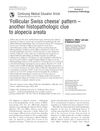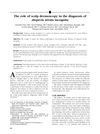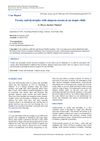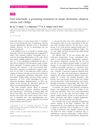Follicular Swiss Cheese Pattern: Another Histopathologic Clue to Alopecia Areata
January 2012
in “
Yearbook of Dermatology and Dermatologic Surgery
”
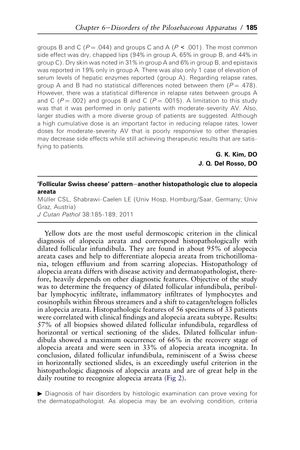
TLDR The study concluded that a 'Swiss cheese' pattern in hair follicles is a useful sign for diagnosing alopecia areata.
The document discusses a study that examined the histopathologic features of alopecia areata (AA) in 56 biopsies from 33 patients. The study found that dilated follicular infundibula, which appear as yellow dots in dermoscopy and are present in about 95% of AA cases, were observed in 57% of the biopsies. These dilated infundibula were especially prevalent in the recovery stage of AA (66%) and were also seen in 33% of alopecia areata incognita cases. The study concluded that the presence of dilated follicular infundibula, resembling a 'Swiss cheese' pattern in horizontal sections, is a highly useful criterion for the histopathologic diagnosis of AA. This finding aids in differentiating AA from other hair disorders, especially in the recovery phase and in cases of AA incognita. The study also noted that while peribulbar lymphocytic infiltrate is a classic sign, it was only observed in 38% of cases, and other histologic findings like eosinophils within fibrous streamers were even less common (4%). The study suggests that recognizing AA as an evolving condition with various histologic clues can improve the accuracy of diagnosis and patient care.
